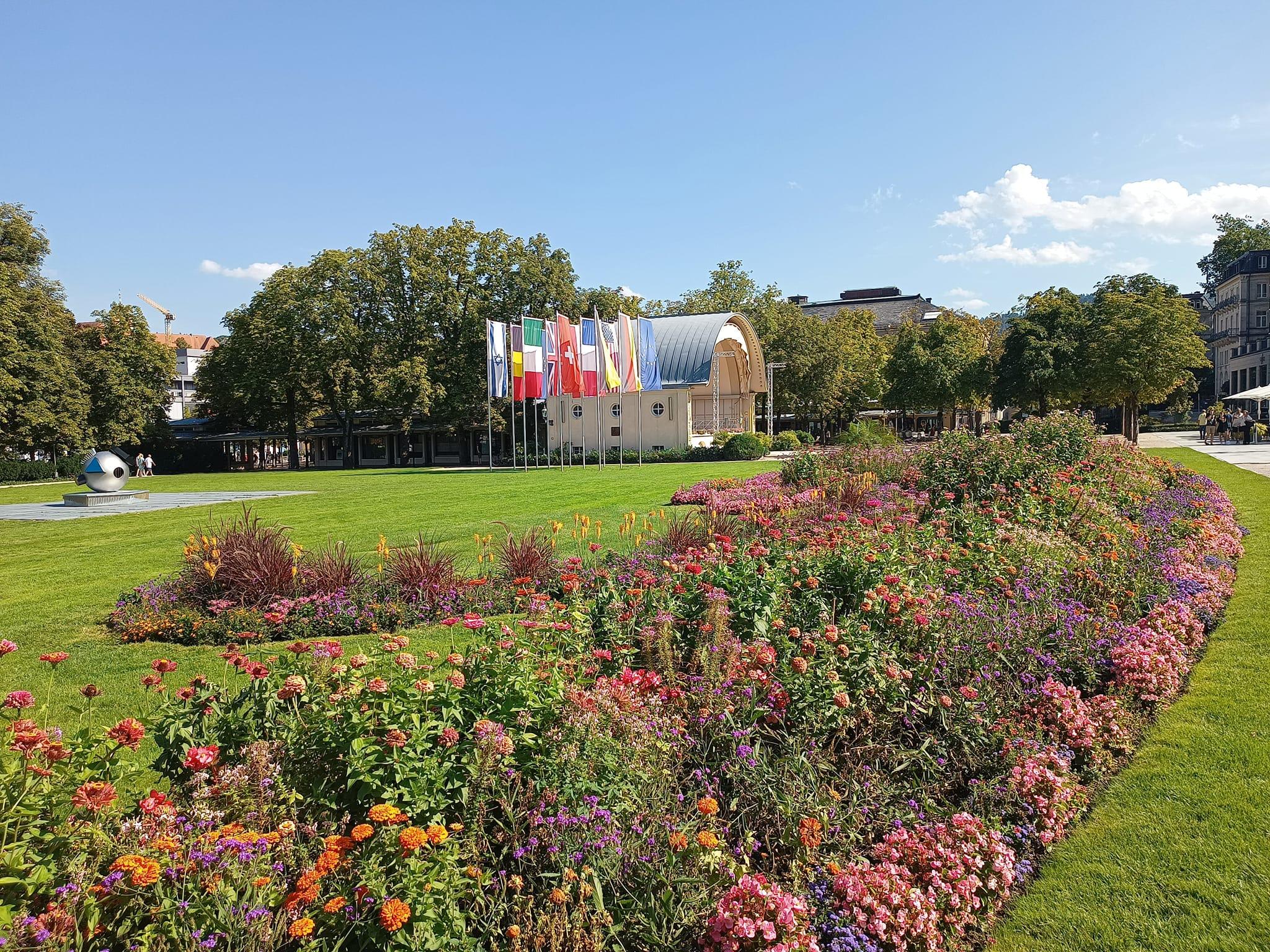
Unearthing the History of Baden Baden: Top Spots to Discover
Baden-Baden,is not only home of Braun Classics, but is also a renowned spa town nestled in the Black Forest region of Germany 2, boasts a captivating history tracing back to the Roman era when it was known as ‘Aurelia Aquensis’ 2 1. This enchanting destination, famed for its thermal baths and attractions, draws visitors seeking to unearth its storied past 4 3.
Explore the ancient Roman remains, including vapor baths from the 1st century AD, or delve into the town’s medieval resurgence and golden age when nobility flocked to its celebrated springs 4. From its Roman beginnings to its modern preservation efforts, Baden-Baden’s rich tapestry unfolds across historic sites, museums, and accommodations 4.
Roman Beginnings
The thermal springs of Baden-Baden were first discovered and utilized by the Romans, who founded the town in the 2nd century BC and named it “Citavis Aurelia Aquensis” 1 [6]. The healing waters were highly valued for their therapeutic properties, and Roman garrisons used them to treat various ailments, including:
- Rheumatic complaints 1
- Injuries, particularly those sustained in war 1 [7]
- Female infertility 1
- Gout 1
- Skin diseases 1
- Respiratory problems 1
The Romans recognized Baden-Baden as an important destination for relaxation and socialization 1 3 5. Luxury baths were constructed to cater to the needs of emperors, soldiers, and even horses 1 5. The town served as a meeting place where the Roman elite could unwind and indulge in the restorative powers of the thermal waters 1 3.
Medieval Resurgence
Baden-Baden’s medieval resurgence saw the town establish itself as a prominent seat of power and a flourishing bathing destination. The Margraves of Baden, originating from the House of Zähringen, made the town their capital from 1112 until the 17th century 1 5. In 1254, the Lichtenthal Convent was founded, further solidifying Baden-Baden’s significance 1.
During the Middle Ages, the town’s thermal waters were widely utilized for treating various ailments through bathing 1:
- Rheumatic complaints
- Injuries, particularly those sustained in war
- Female infertility
- Gout
- Skin diseases
- Respiratory problems
In the 14th century, the town was successfully flooded with thermal water as a protective measure against epidemics 1. However, the Thirty Years’ War (1618-48) marked a turning point, as Baden-Baden initially flourished as a bathing town but was later burnt to the ground by the French in 1689 during the War of the Palatinate Succession 1.
The Margraviate of Baden was split into two parts, Baden-Durlach and Baden-Baden, in 1535 5. Following the devastating fire in 1689, the capital was moved to Rastatt, nearly ending the town’s bathing tradition 1 5. The two parts were reunited in 1771 under Margrave Charles Frederick, and the restored Margraviate, with its capital Karlsruhe, was elevated to the status of an electorate in 1803 5.
Golden Age and Nobility
Baden-Baden experienced a remarkable “golden age” from the 18th to the early 20th centuries, becoming a renowned destination for European aristocracy and celebrities seeking the town’s famed hot springs, casinos, horse races, and other amenities 2 1. This period saw Baden-Baden earn the moniker “Summer Capital of Europe” in the 1850s-1860s, with its population quadrupling during the tourist season 2.
Prominent figures who graced the town during this era included:
To cater to the influx of elite visitors, Baden-Baden underwent significant infrastructural development, including the construction of:
The town’s casino, though temporarily closed in the 1870s, was a major draw for the wealthy and famous 2. At the height of its golden age just before World War I, Baden-Baden was receiving an impressive 70,000 visitors annually 2. The French Bénazet family played a pivotal role in financing the refurbishment of the casino and other developments, further cementing the town’s reputation as the “Summer Capital of Europe” in the 19th century 1.
Modern Era and Preservation
Baden-Baden’s transition into the modern era was marked by a renewed focus on preserving its rich cultural heritage and architectural marvels, while adapting to changing times. From the early 19th century, the town underwent a systematic transformation into a modern health resort, with the construction of iconic landmarks like the Kurhaus and Casino, gaining worldwide recognition as a premier gaming spa 1. However, the Franco-Prussian War and the subsequent ban on gambling in the German Empire in 1872 impacted Baden-Baden’s development, prompting a return to its centuries-old bathing tradition 1.
In response, the city embarked on an ambitious project to construct the monumental Friedrichsbad, a grand bathing temple that harnessed the healing powers of the thermal springs 1. This period also witnessed the demolition of the old city gates and walls, allowing for the expansion of the town into the picturesque Oos Valley 1.
Despite the challenges posed by World War II, during which over 3% of Baden-Baden’s buildings were destroyed 2, the city’s resilience shone through. After the war, it became the headquarters of the French occupation forces in Germany and a center for public broadcasting 2. In the decades that followed, Baden-Baden’s commitment to preserving its heritage paid dividends, culminating in its inscription as part of the UNESCO World Heritage site ‘The Great Spa Towns of Europe’ in 2021 2 1.
Key Attractions and Sights:
- Kurhaus: This iconic 19th-century building, once a hub for the European elite, now houses a casino, theater, and convention center 2.
- Friedrichsbad: A magnificent bathing temple constructed in the late 19th century, offering a traditional Roman-Irish bath experience 2.
- Caracalla Spa: A modern thermal spa complex featuring indoor and outdoor pools, saunas, and wellness facilities 2.
- Lichtentaler Allee: A picturesque park and promenade, lined with stunning gardens and historic buildings 2.
- Museums: Explore Baden-Baden’s rich history through museums like the Fabergé Museum, Museum Frieder Burda, and the Museum Kunsthalle 2.
- Churches and Castles: Architectural marvels such as the Stiftskirche (Collegiate Church), Altes Schloss (Old Castle), and Neues Schloss (New Castle) 2.
- Festspielhaus: A renowned concert hall hosting world-class performances and events 2.
Baden-Baden’s journey through the modern era has been a testament to its resilience and commitment to preserving its cultural and architectural treasures, while embracing its role as a premier European spa and wellness destination 1.
FAQs
What are the main attractions Baden-Baden is famous for? Baden-Baden is renowned for its thermal baths and holds the title for having Germany’s largest opera house and concert hall. Visitors are often captivated by its beautiful parks and gardens, the iconic Kurhaus, and the internationally renowned Casino. Additionally, the Baden-Baden Christmas market is a highlight for many.
Should I consider visiting Baden-Baden? Absolutely, Baden-Baden is a must-see destination. Once celebrated as Europe’s summer capital, the town boasts stunning Belle Époque architecture, expansive green spaces, serene rivers, and numerous health and wellness resorts. Its charm persists through the winter, offering the advantages of lower prices and fewer tourists.
Can you tell me about Baden’s historical significance? Baden’s history as a political entity dates back to 1112. Despite being divided multiple times, it was ultimately consolidated under Charles Frederick in 1771. Notable for its role in 19th-century liberalism and the revolutions of 1848–50, Baden joined the German Empire in 1871 and later became part of the Weimar Republic in 1919.
Is a single day sufficient to explore Baden-Baden? A single day in Baden-Baden might feel quite rushed, as the town offers a serene spa experience that is best enjoyed at a leisurely pace. To fully appreciate Baden-Baden, you’d want ample time to dine at local restaurants, visit renowned sites and museums, explore hiking trails, and unwind at a bar. Thus, one day may not be enough to take in all that Baden-Baden has to offer.
References
[1] – https://www.baden-baden.com/en/unesco-world-heritage/baden-baden-history
[2] – https://en.wikipedia.org/wiki/Baden-Baden
[3] – https://www.britannica.com/summary/Baden-historical-state-Germany
[4] – https://simple.wikipedia.org/wiki/Baden-Baden
[5] – https://en.wikipedia.org/wiki/Baden







